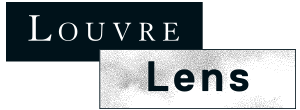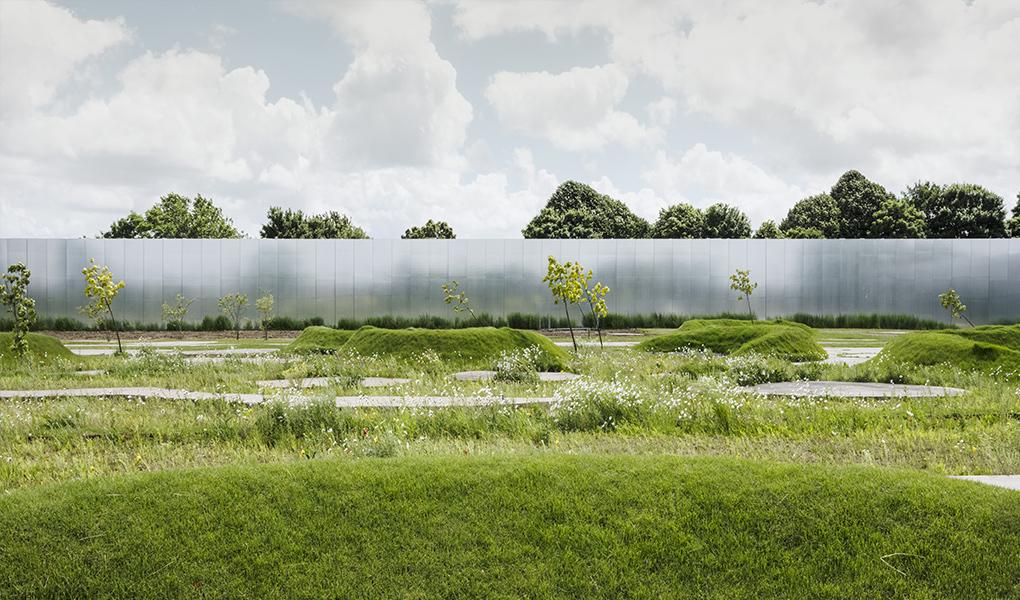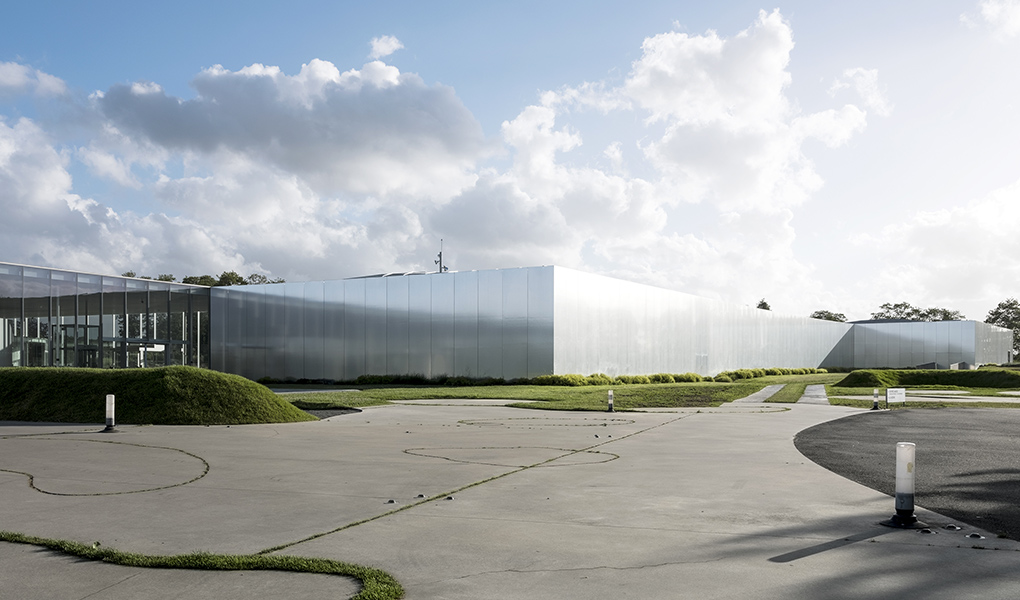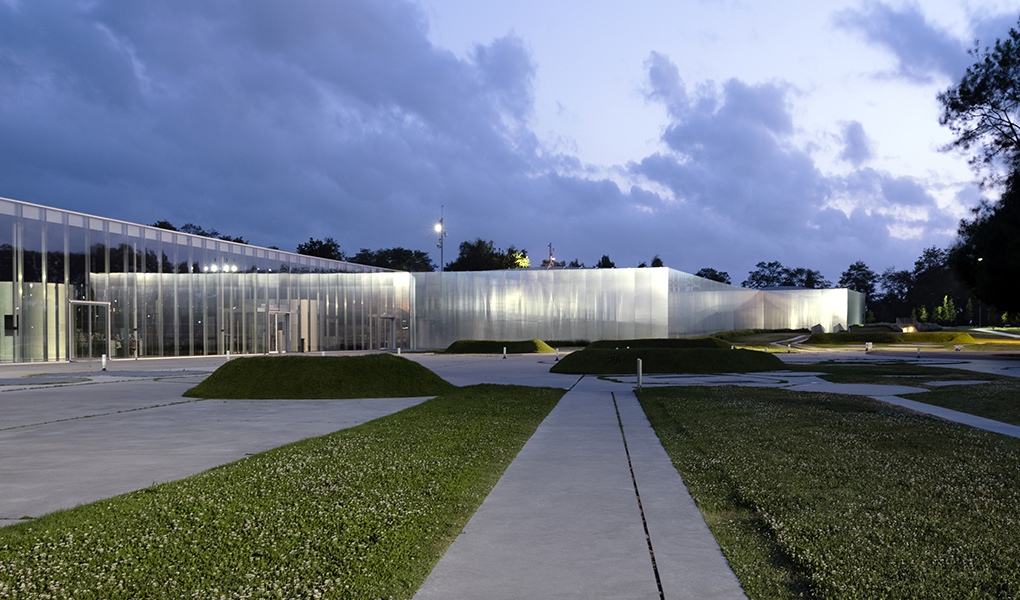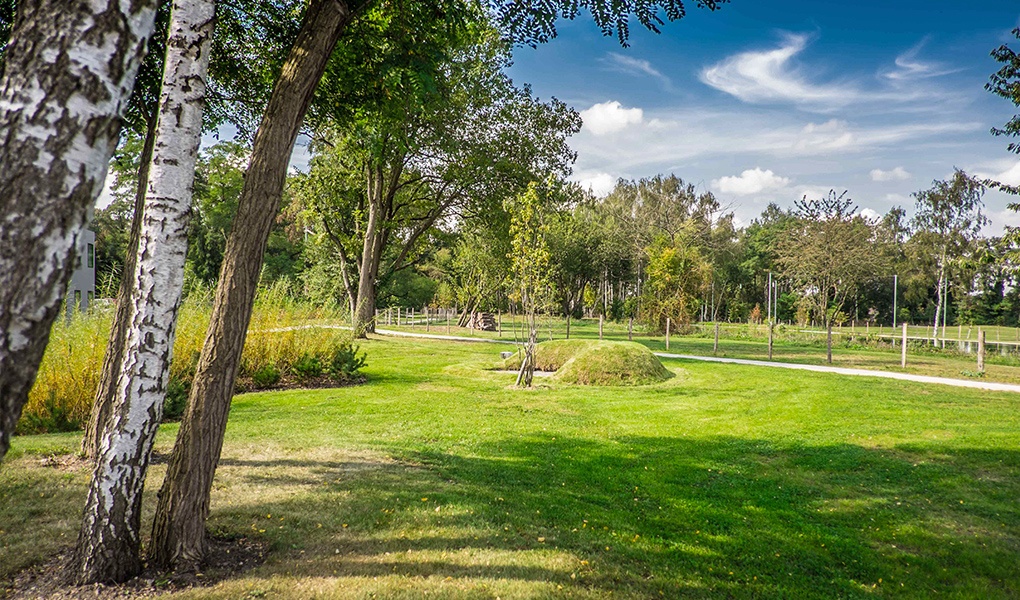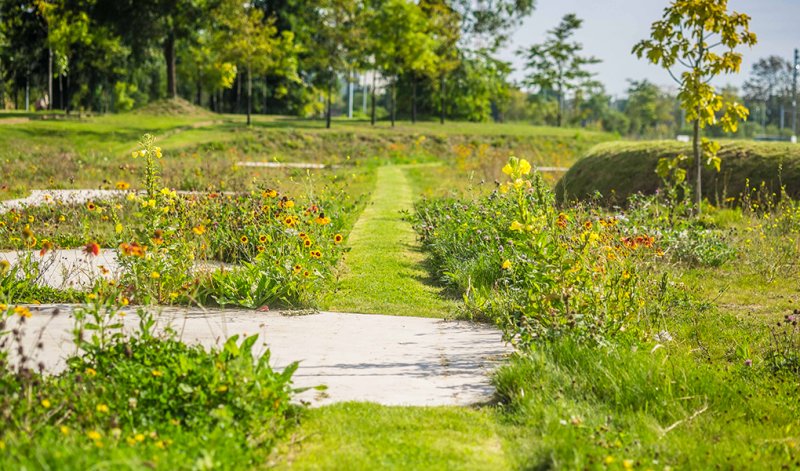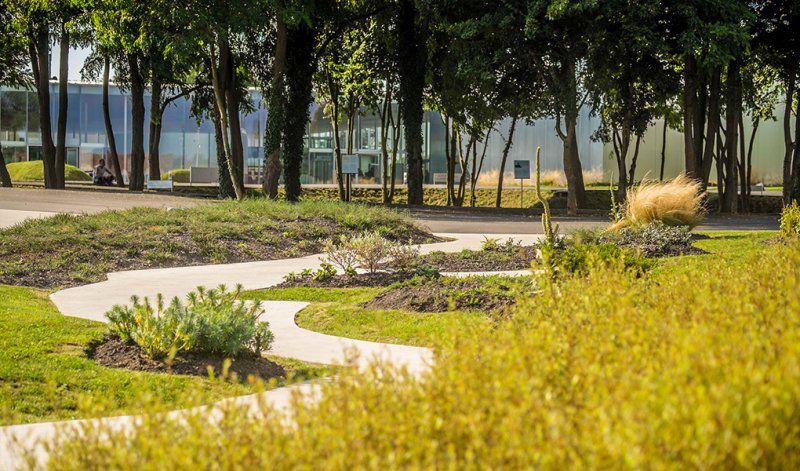Architecture and park
With its long, gently curving lines and its anodised aluminium facades that reflect the landscape, the museum’s delicate, luminous glass form stretches out across the site of a former coal mine. It emerges gradually as you approach it through the surrounding park.
Selected in 2005 from 124 different entries, the design by Kazuyo Sejima and Ryue Nishizawa of the Japanese agency SANAA fulfilled many of the project’s scientific and cultural objectives. Their design, prompted by the idea of creating a gentle transition with the surroundings through transparency and openness to the outside, rejects ostentatious gestures in favour of architecture that is accessible and discreet without being mundane.
The Louvre-Lens was built on a 20-hectare site that was occupied by the 9 and 9 bis mine shafts. This coal mining site was recolonised by nature after it was closed down in 1960.
Deviating from the large vertical structures often favoured by architects, SANAA decided to respond to the very linear, horizontal architecture inherited from the mines with a very long building on a single level.
The main structure follows the gentle slope of the site without ever exceeding six metres in height, leaving the tops of the trees visible in places. The architecture thus merges into its surroundings in a subtle and respectful way, without overwhelming it.

We try to create designs that offer a gentle transition with the environment, through transparency, reflections and direct connection with the outdoors. Our aim is usually to make it impossible to tell where the landscape ends and the building begins.

The main building consists of a sequence of five volumes – a large square and four rectangles – only the corners of which are joined. Their arrangement evokes the Louvre Palace, articulated around a central pavilion onto which are grafted two large wings each overlapping.

Skylights above the staircases illuminate the lower level. The ceiling is clad in light-coloured perforated aluminium sheets, reflecting the natural light and extending across the entire underside.

28,000 m2 is the surface area of the buildings that make up the museum, which extends for a length of 360 metres and covers 8,700 m2. Inside the large agora covering 2,300 m2 float glass bubbles that create more intimate zones, although they are closely connected to the rest of the museum: picnic area, media library, bookshop and gift shop and cafeteria.
The landscape park A park spanning past and future
An integral part of the architectural design from the outset, the 20-hectare park, with its 11 entrances, forms a bridge between museum and city. French landscape architect Catherine Mosbach has reshaped nature in a design that revolves around evocations of the past and a sensitivity to the local ecosystem.
Vestiges of the mine
To the north and south, three main routes make it possible to cross the entire length of the park quickly from west to east. They follow the trace of the former railway embankments along which the coal used to be transported to the station. These paths are an invitation to stroll through woodland, flower meadows, lawns, esplanades and ponds. They are reminiscent of Italian and French Baroque gardens, which encouraged people to wander.
A haven of biodiversity
After coal mining ceased, the deposits of shale and sandstone became a refuge for diverse flora. The museum was built with the aim of minimising the impact on the species that had colonised the slag heap. Different zones were created making it possible to conserve the remarkable plant species, such as milk vetch with its liquorice leaves, a protected plant that is very rare in northern France, and hoary mullein.

In the past, the edges of the site were meant to keep out those who did not work in the mine. My task was to create the opposite effect, so that the park opens its arms to the outside.
